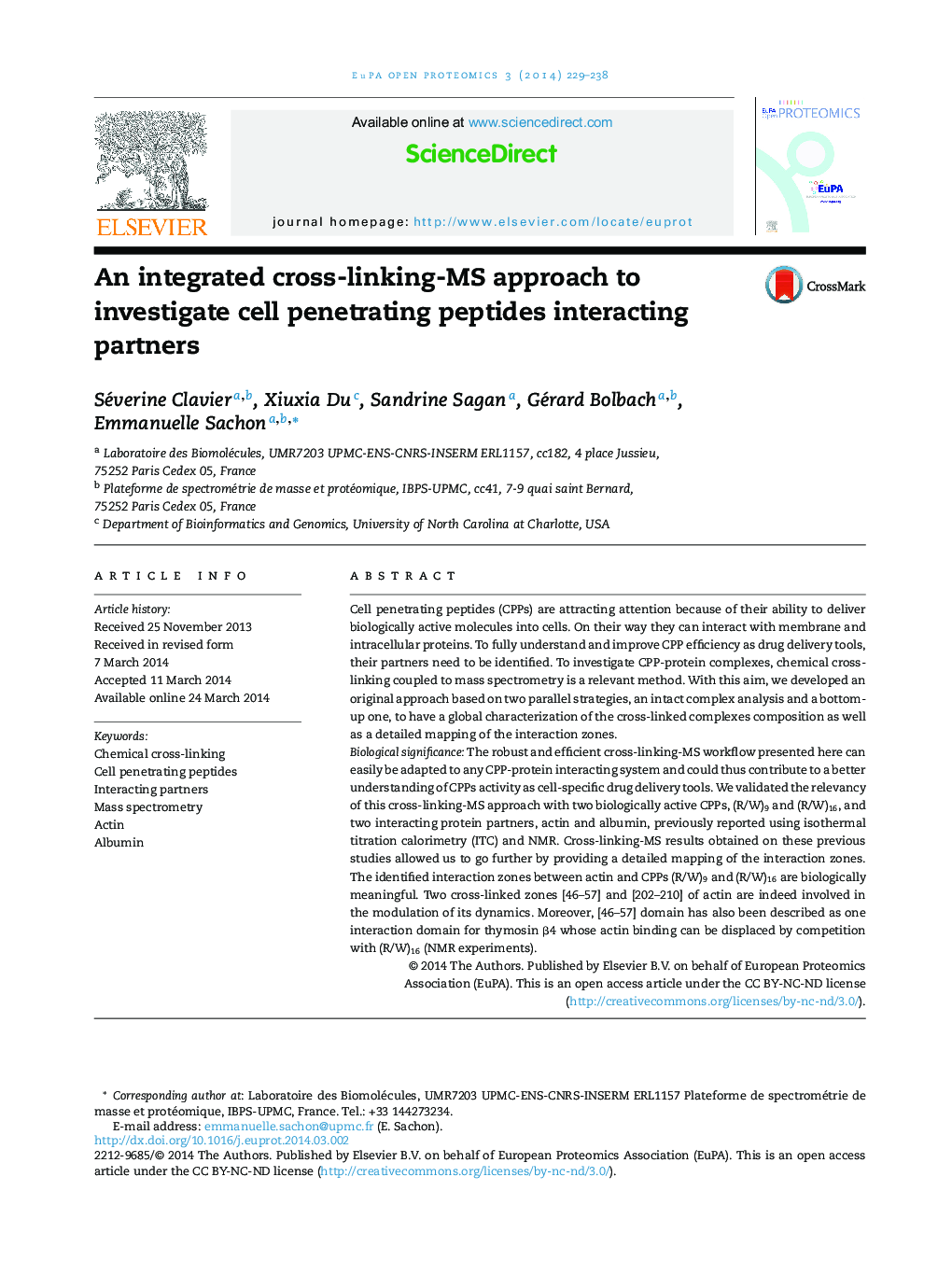| Article ID | Journal | Published Year | Pages | File Type |
|---|---|---|---|---|
| 1183002 | EuPA Open Proteomics | 2014 | 10 Pages |
•Complementary approaches to fully characterize cross-linked products.•SIMUL-XL, an open source script to quantitatively describe linear MALDI-TOF spectra.•Bottom-up analysis and Xlink-Identifier software for interaction zones mapping.•(R/W)9 or (R/W)16 interact with actin in a region necessary for thymosin β4 binding.•Characterization of interaction zones involved in the modulation of actin dynamics.
Cell penetrating peptides (CPPs) are attracting attention because of their ability to deliver biologically active molecules into cells. On their way they can interact with membrane and intracellular proteins. To fully understand and improve CPP efficiency as drug delivery tools, their partners need to be identified. To investigate CPP-protein complexes, chemical cross-linking coupled to mass spectrometry is a relevant method. With this aim, we developed an original approach based on two parallel strategies, an intact complex analysis and a bottom-up one, to have a global characterization of the cross-linked complexes composition as well as a detailed mapping of the interaction zones.Biological significanceThe robust and efficient cross-linking-MS workflow presented here can easily be adapted to any CPP-protein interacting system and could thus contribute to a better understanding of CPPs activity as cell-specific drug delivery tools. We validated the relevancy of this cross-linking-MS approach with two biologically active CPPs, (R/W)9 and (R/W)16, and two interacting protein partners, actin and albumin, previously reported using isothermal titration calorimetry (ITC) and NMR. Cross-linking-MS results obtained on these previous studies allowed us to go further by providing a detailed mapping of the interaction zones. The identified interaction zones between actin and CPPs (R/W)9 and (R/W)16 are biologically meaningful. Two cross-linked zones [46–57] and [202–210] of actin are indeed involved in the modulation of its dynamics. Moreover, [46–57] domain has also been described as one interaction domain for thymosin β4 whose actin binding can be displaced by competition with (R/W)16 (NMR experiments).
Graphical abstractFigure optionsDownload full-size imageDownload as PowerPoint slide
